Transform Your Backyard with an Easy Intex Pool Setup
October 30th, 2024
October 30th, 2024
The idea of transforming your backyard into a personal oasis with an Intex pool might seem daunting at first glance. But with a bit of guidance, the process can be as refreshing as a dip in the pool itself! The key to a stress-free setup lies in simplicity and preparation. As someone who has experienced the journey from boxed pool parts to a shimmering blue oasis, it's worth noting that the initial apprehension quickly turns into excitement once the basics are covered and all necessary tools are at hand.
Breaking down the task into manageable steps is essential. Start by choosing the ideal spot, ensuring it's flat and free from debris. Friends of mine have shared stories of first attempts on uneven ground, resulting in the comical sight of water cascading over one side. Learning from such examples, it’s clear that patience pays off. Next, gather your tools and unpack the box—always a surprise treasure trove of accessories and instructions.
The real magic happens when family and friends join in. The pool setup becomes more than a task; it's a collective effort filled with laughter and shared anticipation. Through hands-on involvement, you not only create a recreational space but also weave memories that linger long after summer has passed. In essence, with the right mindset and preparation, setting up your Intex pool can become a cherished ritual rather than a chore.
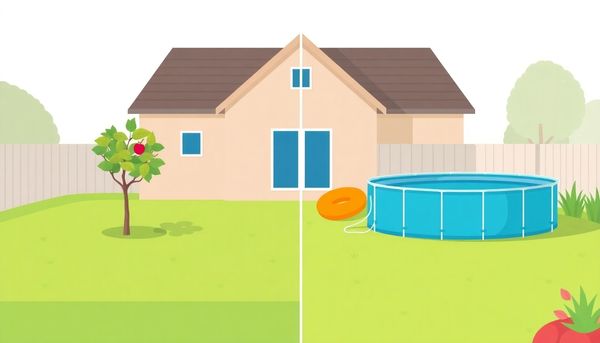
In the world of pool setups, the stability of flat ground is akin to the foundation of a house. It’s crucial, yet often overlooked. Anyone who’s ever tried to assemble an above-ground pool knows that the surface it rests on can make or break the entire experience. When dealing with an Intex pool, ensuring a stable, level ground isn't just a suggestion—it's an absolute necessity.
Consider the potential chaos of water shifting unevenly; before you know it, there’s a mini tsunami on your lawn, and you’re the unwitting host of an impromptu mud wrestling match. To avoid such catastrophes, it’s essential to prepare the spot where your pool will lie. Start by identifying an area that appears as level as your kitchen table. If you’re setting up on grass, mow it down until the earth peers through. Remove rocks, twigs, and any stubborn debris that might puncture the pool’s liner.
Use a long board, perhaps a trusty 2 x 4, coupled with a carpenter’s level to verify that the ground is indeed flat. Even a variation of an inch or two can cause headache-inducing issues later. Once satisfied with the terrain, lay down a protective barrier like a tarp. This will act as a shield against any sneaky grass roots and provide a smoother surface for your pool's liner.
Concrete surfaces offer a simpler solution, but don’t skip the tarp. While sand might seem tempting, resist the urge; it’s a notoriously unstable foundation that could send your pool tipping. By taking these steps, you cement the groundwork for a summer filled with joyous, stress-free splashing.
Upon unboxing your brand-new Intex pool, the first real challenge is preparing the ground. This crucial step ensures stability and longevity for your pool, and it can make or break your summer fun. Without the proper groundwork, you risk uneven water distribution, which can lead to a leaning pool or worse, a collapse.
Start by choosing the right spot—look for an area that's flat, solid, and free from any incline. Avoid sandy surfaces, as they tend to shift and destabilize the pool structure. If you're using your lawn, get down and dirty with a weed trimmer to remove grass and expose the soil beneath. This will not only level the ground but also clear away sharp objects like rocks and twigs that could puncture the pool liner.
Once the surface is cleared, employ a sturdy board, like a 2 x 4, to check for levelness. A carpenter's level can help ensure the ground doesn't vary by more than an inch or two. This attention to detail prevents water from pooling unevenly.
Lay down a durable ground cloth or tarp to act as a buffer between your pool and the earth. This protective layer discourages weed growth and provides an extra safeguard against punctures. If your setup is on a hard surface like concrete, the tarp still offers critical protection and cushioning.
Through careful preparation, you set the stage for a successful and stress-free pool setup, paving the way for countless carefree summer days.
Sorting through the components of an Intex pool can initially seem like a daunting task. Unlike the one-piece kiddie pools of yore, an Intex pool involves a multitude of parts that require careful assembly. Before diving headlong into setup, take a leisurely inventory of every component. Spread out all the pieces on your patio or lawn, checking each against the list in the user manual. This ensures that you are not left scrambling for a missing T joint or a crucial support beam mid-assembly.
A few summers ago, I learned this lesson the hard way. Eager to get the pool up and running, I skipped the step of verifying each part—only to find myself short of a crucial connector right at the end. It turned into a frantic scramble to source one locally, a scramble I would have gladly avoided with a bit of preemptive checking.
Should you discover any missing pieces, contact Intex customer support promptly. They often provide replacements, minimizing any disruption to your pool assembly plans. Alternatively, spare parts can frequently be found online, where a community of fellow pool owners may have valuable advice on sourcing or substituting parts. Ensuring that all pieces are present and accounted for is the foundation of a stress-free setup, paving the way for a summer full of splashing and fun.
Precision in leveling the ground for your Intex pool is not just a recommendation; it's a necessity. Think back to the simplest science experiments, where one minor mishap could send the whole operation spiraling. An unlevel pool has the same potential for disaster, causing undue stress on the frame and possibly leading to collapse.
Start by identifying the flattest spot in your yard. A small dip or bump may seem trivial, but once the pool is filled, these can become problematic. Use a string level or a long board with a carpenter’s level to assess the ground. Measure and mark any areas that need adjustment. If an area is higher, shave it down; if it's lower, add some soil. It's a bit of a workout, but trust me, your future self will thank you.
My cousin, who’s a bit of a DIY aficionado, swears by using sand to smooth out minor variations, though always sticking to a minimal layer. Once satisfied, place a ground cloth or tarp over the area. This simple step not only adds a layer of protection for the pool liner but also prevents pesky weeds from making an unwanted appearance during your poolside relaxation.
After all this meticulous preparation, you’ll find that the rest of the setup flows smoothly. With a solid foundation, your pool stands ready to offer countless hours of refreshing enjoyment, a testament to your early efforts in ensuring a level playing field.
You've finally brought home that coveted Intex pool, a beacon of summer joy, only to be confronted by a daunting assembly of parts. The first step towards a stress-free setup is ensuring that every component is accounted for and in pristine condition. Spread out all the pieces across your driveway or garden and turn your attention to the user manual. It's not just a heap of paper; it's your guide to success. Match each part you have with the checklist provided. This process might feel tedious, but it's essential. One missing piece—a pole, a joint, or even a small connector—can derail your plans faster than a surprise thunderstorm.
Don't overlook the importance of checking each component for any damage. A slightly bent beam or a crack in a connector might not seem catastrophic now, but they could lead to a catastrophic failure once your pool is filled. If anything is amiss, contact the manufacturer immediately. Many companies are responsive and ready to send replacements. Alternatively, online marketplaces might have what you need, though it's always recommended to get original parts for compatibility.
Patience here pays off. The frustration of delaying setup for a few days is minor compared to the headache of a faulty assembly. Plus, taking the time to verify everything ensures that when you do start assembling, it's smooth sailing right through to the first splash.
Unboxing that fresh Intex pool can feel like opening a jigsaw puzzle with extra pieces. Trust me, a little patience goes a long way here. Begin by spreading all components across your yard or patio, creating a visual inventory that might just reveal a missing piece before it becomes a mid-assembly headache. This is where a trusty user manual becomes your best friend, guiding you step-by-step through the checklist to ensure you're not scrambling for a vital pole or connector later on.
Once, during my own pool setup adventure, I discovered a crucial support beam was missing right before the final assembly. A quick call to customer support saved the day, emphasizing the importance of checking everything upfront. If you find yourself in a similar bind, manufacturers often dispatch replacements swiftly, or a quick search online can unearth the part needed.
Avoid future frustrations by resisting the urge to jump headfirst into construction. Remember, gathering all components before starting is akin to laying out all the pieces of a board game before diving in. With all components accounted for, you're not just assembling a pool; you're setting the stage for countless summer memories. Take the time now, and you'll thank yourself when everything fits together seamlessly, leaving room for sun-soaked relaxation rather than frantic problem-solving.
Setting up an Intex pool can feel like tackling an epic project, but the key lies in the foundation—literally. Ensuring you have a flat and sturdy surface is essential. When it comes to leveling your ground, think of it as setting the stage for a spectacular performance. Your pool deserves a flawless stage, free from rocks and grass tufts that might disrupt its delicate balance.
First, survey your yard for the best possible location. Look for a spot that receives ample sunlight, away from overhanging trees that might drop leaves and debris into your pristine water. A sunny area also keeps unwanted chilly dips at bay early or late in the day. Once you've claimed the perfect patch, begin by trimming any grass down to the soil. A weed trimmer works wonders here, peeling back nature’s green carpet to reveal the earth beneath.
Next, clear away any stones, twigs, or hidden hazards. A simple 2 x 4 and a bubble level will be your trusty companions in this mission. Slowly drag the board across the site, ensuring no point deviates more than an inch. The ground must be your pool’s steadfast ally, not its saboteur. Once satisfied, lay a ground cloth or tarp to protect the pool liner. This will not only shield it from potential punctures but also deter pesky weeds from making an unwanted appearance.
Avoid the temptation to use sand. While it might seem like a convenient solution, its shifting nature can lead to an unbalanced pool. A solid, stable surface is your goal. With the ground now prepared, you're ready to embrace the next steps in your Intex pool adventure, confident that your foundation is as reliable as your summer fun is bound to be.
Stepping into your backyard with a box full of pool parts can feel like opening a complex puzzle, but fear not. The key to a smooth Intex pool assembly lies in preparation and a bit of teamwork. Gather your parts, tools, and a willing friend. Begin by laying out all the components on a clean surface. This helps in visualizing the structure you're about to create and ensures nothing is missing. It’s like setting up a game board before the main event; everything in its place, ready to go.
As you start with the horizontal beams, remember to slip each one into the pool liner's sleeves carefully. Connect these beams to the T-joints, ensuring they don’t rest directly on the liner to avoid unnecessary stress and damage. The framework begins to take shape like a skeleton coming together. When the time comes to tackle that stubborn last T-joint, a friend’s assistance can make all the difference; it’s the pièce de résistance of your pool assembly.
Vertical support legs are the next step. Insert each leg into the corresponding liner pockets, adding a leg cap for stability. These supports are crucial as they form the backbone of your pool. Once everything is in place, the structure should feel solid and reassuring. Before filling the pool, take a moment to smooth the liner and tighten any loose beams. Success in the assembly phase means you’re just a step away from cooling off in your very own oasis.
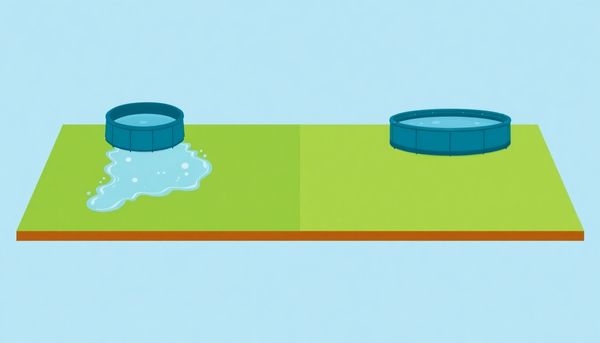
Opening the box to your brand-new Intex pool can feel like staring at an unsolved puzzle. A million parts, diagrams that belong in an art museum, and the looming threat of an improperly assembled pool are enough to make any summer enthusiast sweat. But what if there was a way to turn this daunting task into a joyful, shared experience?
First, enlist a buddy or family member. Remember that time you and your cousin tried assembling a tent on a windy beach day? Two heads are better than one, especially when it comes to aligning those pesky T joints or ensuring the pool’s liner isn't being stretched beyond its limits. While one person holds the frame steady, the other can focus on connecting the pieces—a process reminiscent of those childhood days building LEGO castles, only with much bigger rewards.
Laying out each part on the ground before assembly can transform your lawn into a strategic battlefield. Think of it as setting the scene for a grand adventure—each piece has its place in the grand scheme. As you begin to assemble, communication is key. Calling out instructions or reminders can prevent missteps and keep the process smooth.
With someone by your side, not only does the pool come together faster, but the shared laughter and teamwork turn a chore into a cherished memory. By the end, you've not only got a pool ready for countless summer escapades but also a story worth telling at the next family barbecue.
Setting up an Intex pool on a level ground is not just a recommendation; it’s a necessity. Uneven surfaces can spell disaster, compromising both the pool’s integrity and your summer plans. A childhood memory of wading in a lopsided kiddie pool might be endearing, but as adults, we aim for a more sophisticated experience.
Before the assembly begins, spend time evaluating your chosen site. Start by inspecting the area for high and low spots. If the ground resembles a miniature version of the Rockies, grab a shovel and start leveling. You may find that a simple 2 x 4 piece of wood and a carpenter's level can become your best allies in this task. Slide the board across the ground, and let the level tell you where adjustments are needed. The goal is a variance of no more than one inch across the entire area—a small price to pay for peace of mind.
Don't overlook the importance of a ground cloth or tarp. Spread one out to provide a buffer between the pool and the earth. This will help guard against unwanted punctures and slow the growth of grass or weeds beneath the pool.
For those considering a concrete patio as a base, you’re in luck. With its naturally even surface, concrete provides a firm foundation. Yet, even here, a ground cloth remains essential to protect the pool liner.
Remember, taking the time to ensure a level base isn't just about safety—it's about guaranteeing a summer full of splash-tastic fun without the worry of pool mishaps.
Embarking on the journey of setting up your Intex pool is like preparing for a grand adventure. The first step is ensuring you have every part and piece ready, a critical phase that can save hours of frustration later on. Imagine you're about to bake a cake; you wouldn't start without checking if you have all the ingredients, right? The same principle applies here.
Start by unpacking the box with care and precision. Spread all components out on a clean, flat surface, perhaps your driveway or a spacious garage area. This not only gives you the lay of the land but also minimizes the risk of losing smaller parts to the grass or gravel. Grab that user manual and take a moment to compare your inventory against the checklist. If any part is missing, don't hesitate to contact the manufacturer or order replacements online. It's better to pause now than to discover a crucial piece is missing halfway through setup.
A personal anecdote: when I assembled my own Intex pool, I found a missing connector piece. Instead of plunging into panic, a quick online order had me back on track in no time. This simple precautionary step ensured that once everything was in place, the assembly was smooth sailing, paving the way for a summer full of splashes and laughter. So, gather all the necessary bits with a keen eye, and set the stage for a stress-free pool setup.
Setting up an Intex pool is akin to orchestrating a small backyard revolution. While it's tempting to soldier through the assembly solo, you might find that a helping hand smooths the journey considerably. Enlist the support of a friend or family member; it's astonishing how much of a difference an extra set of hands can make. This isn't just about sharing the workload; it's about leveraging the power of teamwork to transform a daunting task into a manageable one.
Think back to those childhood memories when assembling a backyard fort with friends was more about camaraderie than construction. Unfolding the pool liner and aligning the framework can evoke a similar spirit. One person can stabilize the poles while the other secures the T joints, ensuring nothing topples over before it's ready. It's not just about efficiency—it's about creating a shared experience, maybe even some laughs, that could turn into cherished memories.
Additionally, having a second person around is practical. They can provide feedback on structural alignment, help spot potential issues early, and serve as a vital lookout for any missing parts. Such oversight can prevent headaches down the road, ensuring the pool stands tall and sturdy. With teamwork, the setup process becomes not just simpler, but a delightful prelude to the refreshing swims ahead. As the pool fills, you'll both stand back and admire the accomplishment, knowing you turned what could've been a chore into a fun and fulfilling activity.
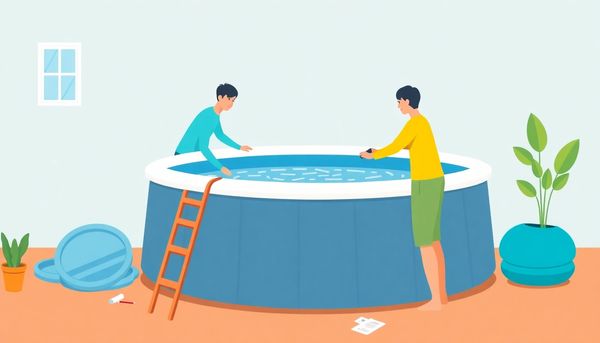
Wrinkles in a pool liner can turn a relaxing swim into an uncomfortable foot massage, leaving you with more aches than ease. This part of your Intex pool setup requires a gentle touch and a bit of patience. Enlisting a friend’s help can transform what might be a solo struggle into a cooperative success. As you prepare to smooth out the liner, imagine it as a giant tablecloth—shake it, stretch it, and shift it until it lies flat.
Start by spreading the liner evenly across your prepared, level ground. A helpful technique is to kneel at one end of the pool base and gently pull the liner towards you. This pulls the excess material outwards, flattening the potential of folds and creases. If you find a persistent wrinkle, a few strategic tugs at the edges can often flatten it out.
Once you have laid the liner as flat as possible, use your feet to gently press down and shuffle any remaining wrinkles towards the edges. This method ensures a smooth surface underfoot when the pool is filled.
Before you begin filling, ensure that the liner fits snugly within the frame, with no portions caught under the structure. As the water fills, it will naturally push the liner further into place, but starting with a wrinkle-free base makes the process seamless. With a little care and attention, you’ll be ready for a splash in no time, without the surprise bumps beneath your toes.
When preparing to set up an Intex pool, the groundwork—quite literally—plays a pivotal role in ensuring a smooth experience. While it might evoke memories of wrestling with that wobbly kiddie pool from childhood, this process demands a bit more diligence but promises a more rewarding outcome.
Begin by scouting an ideal location in your yard. It's not just about aesthetics; it's about stability. Avoid areas prone to shifting, like sandy patches, where the pool might settle unevenly and risk tipping over. Having learned from a friend's pool mishap—resulting in a tidal wave that drenched her patio—I've made it a point to choose firm ground.
Once the location is set, clear out debris. Remove rocks, sticks, or anything that could puncture the liner. Using a garden rake can help smooth things over, but for true peace of mind, employ a level to ensure the site isn’t more than an inch off in any direction. A flat surface not only prolongs your pool’s lifespan but ensures it can hold water evenly.
Lay down a protective ground cloth or tarp before unfurling that massive liner. This not only guards against pesky weeds but provides a buffer against those sneaky sharp objects you might have missed. If you're working on concrete, a tarp becomes doubly important to prevent abrasions on the pool's underside.
With the groundwork complete, you're well on your way to turning that backyard into a personal oasis. And remember, every meticulous step now means fewer mid-summer headaches later.
Unboxing an Intex pool can feel like the start of an ambitious project, but assembling the frame is where the magic truly begins. First things first, lay out all the parts you’ve already checked against the manual. This is your puzzle, and each piece has its place. With everything spread out, begin with the horizontal beams. Slide these beams into the sleeves of the pool liner, creating the basic circular or rectangular shape.
You might recall a moment when assembling furniture felt like a solo quest that needed an extra set of hands. This time, you have help—or perhaps a willing family member—to hold steady those tricky T joints. The connections should form seamlessly, but don’t be surprised if the last joint tests your patience. This is where teamwork shines, as another pair of hands can make all the difference.
Once the horizontal frame is secure, it’s time to add the vertical support legs. Align each leg with the corresponding slots, ensuring they fit snugly. A small tip: keep an eye on those leg caps. They’re crucial for keeping the liner protected and the structure sound. Each support should slide into position with a satisfying click, setting the groundwork for a pool that stands strong against summer splashes.
With the frame in place, you’re not just setting up a pool; you’re crafting a summer haven. As you step back, admire the skeletal structure. It’s a canvas ready to be filled, waiting to become the heart of your backyard escape.
Wrestling with an unwieldy pool liner can feel like trying to fold a king-sized bedsheet on a windy day. It’s a task best tackled with patience and a bit of finesse. Envision the liner as your pool's suit of armor, guarding against leaks and tears. Handling it with care from the get-go ensures your pool will be ready for action without hiccups.
Start by enlisting a buddy to help unfold the liner. Two sets of hands reduce the chance of dragging it across rough ground, which could result in unwanted tears. Lay it out flat on your prepared surface, ensuring it's centered and smooth. If you've ever spread a picnic blanket on a breezy day, you know the importance of getting it right the first time.
Next, take a moment to eliminate any creases. These wrinkles might seem insignificant now, but could later become annoying underfoot. Walk around the perimeter of the pool, gently pulling the edges outward. This simple step, which feels akin to smoothing out a beach towel, makes a significant difference in comfort and durability.
Finally, align the filter connection holes with your pump setup area. This not only saves you from headaches later but also keeps your pool's plumbing tidy and efficient. Once you’ve ensured everything is in place, you’re ready to move on to building the frame, knowing that your liner is snug and secure. With this foundation laid, you're well on your way to enjoying a summer oasis without a hitch.
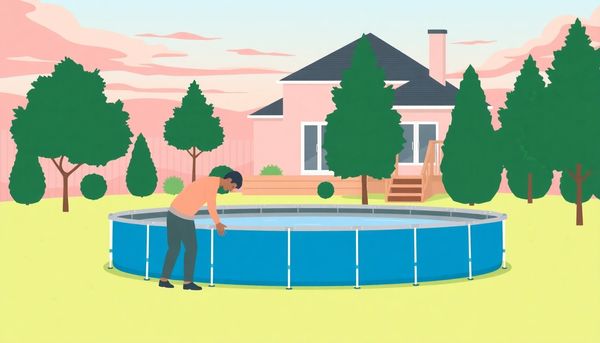
Keeping an eye on the water fill levels in your Intex pool is akin to watching the kettle boil—but with a much bigger payoff. As the pool fills, it's crucial to maintain a vigilant watch. This simple task ensures not only the safety of your pool but also the longevity of its structure. An overfilled pool can put undue stress on the frame, causing potential collapse, while too little water might not give the needed pressure for the filtration system.
Think of it this way: when you fill a glass too full, it spills over, right? That's exactly what you want to avoid. Set your hose and monitor the fill line diligently. Some find setting a timer on their phone helpful, checking back at regular intervals. This prevents any thoughts of wandering off to another task while the water rises.
If your pool is filling unevenly, it might indicate a problem with your setup's levelness. A little adjustment early on can save a lot of hassle later. The goal is to have the water line about two inches above the upper hose connection. This level ensures optimal functioning of your filtration system, keeping your water clean and clear.
Remember, once the water reaches the desired level, promptly turn off the hose. This small act prevents overfilling and preserves the stability of the pool. With a well-monitored fill, you’re set for many afternoons of lounging and laughter.
When my neighbor first tackled an Intex pool setup, he discovered the importance of proper surface preparation the hard way. His enthusiasm was palpable, but after the pool tilted awkwardly, he realized he had skipped a critical step. Ensuring a solid and level foundation for your pool is paramount.
Start by selecting a location that is not only flat but also free from debris. Sticks, stones, and even small rocks can puncture the pool liner or create uncomfortable bumps. Use a garden rake to clear the area thoroughly. Once the site is clean, check the levelness of the ground with a long board and a carpenter's level. Any variation beyond one to two inches can spell trouble, leading to uneven water distribution and potential structural stress.
After leveling, lay down a durable ground cloth or tarp. This layer acts as a protective barrier between the pool and the ground, guarding against abrasions and unwanted vegetation growth beneath the liner. For those setting up on concrete, don’t skip this step; it helps cushion the pool and adds an extra layer of defense.
Avoid the temptation to use sand as a base. While it might seem like a soft, inviting option, sand can shift and settle unevenly, causing the pool to lean and compromise its integrity. Trust me, a well-prepared surface not only safeguards your investment but also paves the way for a seamless and stress-free pool setup experience.
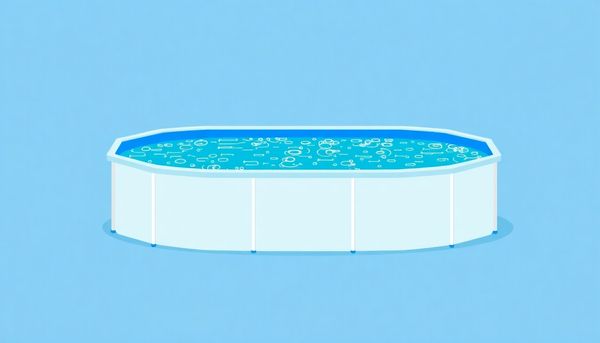
This article provided insights into maintaining your pool. Start your pool care journey today!
Want to become a pool maintenance expert? Our free Pool School course covers everything you need to know about pool care. From basic maintenance to advanced troubleshooting, you'll learn how to:
Join over 10,000 pool owners who have already transformed their pool care routine. Get started with our free Pool School course today!